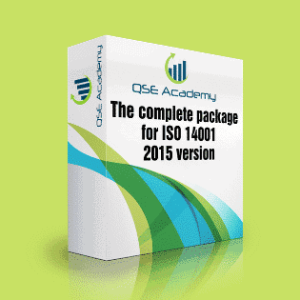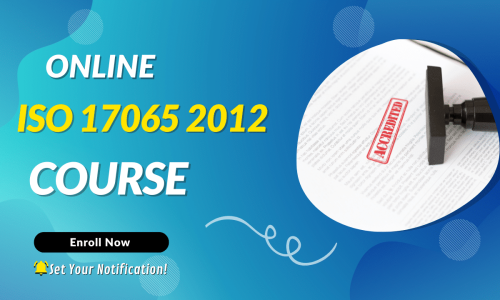ISO/IEC 17065 Gap‑Analysis Checklist
ISO/IEC 17065 Gap‑Analysis Checklist
Why a Gap Analysis Is the Smartest First Step Toward ISO/IEC 17065 Accreditation
When certification bodies start preparing for ISO/IEC 17065 accreditation, most rush straight into writing procedures. I’ve seen this many times. The problem? They don’t know what’s already compliant and what’s missing. That’s where a gap analysis comes in — it’s the most efficient way to understand your starting point.
At QSE Academy, we’ve guided dozens of product certification bodies through this phase. Some realized they were 70% compliant before even writing a single new procedure — simply because they’d been unknowingly following best practices already.
This guide will show you how to use an ISO/IEC 17065 Gap-Analysis Checklist to measure your readiness, uncover hidden gaps, and turn findings into an actionable plan.
What Is an ISO/IEC 17065 Gap Analysis and Why It Matters
A gap analysis is like holding up a mirror to your current system and comparing it against ISO/IEC 17065’s clauses. It reveals what’s aligned, what’s partial, and what’s missing entirely.
It’s not an audit. It’s a diagnostic tool to identify where your certification body stands before you officially begin implementation.
Pro Tip: Always do your gap analysis before creating documentation. It’ll save you from rewriting half your procedures later.
Common Mistake: Treating it like a formal audit — marking everything “non-compliant” without context. The goal isn’t to judge but to prepare.
Example: One certification body we worked with discovered early that their impartiality committee didn’t meet Clause 4.2 requirements. Because they caught it early, they restructured their process well before the accreditation body stepped in.
 Key Areas to Review in an ISO/IEC 17065 Gap-Analysis Checklist
Key Areas to Review in an ISO/IEC 17065 Gap-Analysis Checklist
Let’s break down the essential sections your checklist should cover — and what to look for in each.
Clause 4 – General Requirements
- Check your impartiality and confidentiality processes.
- Verify your legal entity status, liability coverage, and financial stability.
- Review the impartiality risk register and committee meeting minutes.
Pro Tip: Cross-reference your organizational chart with impartiality controls to prove independence.
Clause 5 – Structural Requirements
- Ensure roles and reporting lines are defined and documented.
- Validate that decision-making authority supports impartiality.
- Confirm top management responsibility for certification decisions.
Common Mistake: Having a structure chart that looks compliant but doesn’t reflect real-world responsibilities.
Clause 6 – Resource Requirements
- Check personnel competence, training records, and evaluation forms.
- Review calibration records and maintenance logs for relevant equipment.
- Verify that outsourced evaluators meet qualification standards.
Pro Tip: Map every technical role to the scheme requirements. It’s a fast way to show competence during audits.
Clause 7 – Process Requirements
- Evaluate your process for reviewing applications, evaluating products, making certification decisions, and handling complaints or appeals.
- Ensure evaluation criteria are consistent and well-documented.
- Review your certification decision and impartiality procedures.
Common Mistake: Missing objective decision-making criteria under Clause 7.6 — one of the most frequent findings during accreditation assessments.
Clause 8 – Management System Requirements
- Examine document-control systems, internal audit programs, and management review records.
- Check for procedures covering control of records, corrective actions, and continual improvement.
Pro Tip: Test your document-control process by retrieving one record. If it takes more than two minutes, it’s not working efficiently.
How to Use the ISO/IEC 17065 Gap-Analysis Checklist Effectively
A checklist is only as good as the way it’s used. Here’s how to make it truly valuable:
- Assign responsibilities. Each clause should have an owner — quality manager, technical expert, or scheme owner.
- Rate compliance. Use three columns: Compliant, Partially Compliant, Not Compliant.
- Record evidence. Cite the procedure name, document number, or record showing compliance.
- Note corrective actions. Add specific tasks, responsible persons, and deadlines.
- Review together. Hold a short management meeting to prioritize next steps.
Pro Tip: Keep your checklist digital — Excel, Notion, or QSE Academy’s implementation tracker. It makes updates easier and prevents version confusion.
Example: A client used a color-coded Excel tracker. Within one glance, management could see Clause 6 (yellow) needed attention, while Clauses 4 and 8 (green) were nearly ready.
Turning Gap-Analysis Results into a Practical Implementation Plan
Once your checklist is complete, it’s time to act.
- High-priority gaps: Address immediately (e.g., missing impartiality controls or competence evaluations).
- Medium-priority gaps: Schedule within your implementation project timeline.
- Low-priority gaps: Tackle during the next management review or internal audit cycle.
Pro Tip: Use QSE Academy’s ISO/IEC 17065 Project-Plan Template to convert your gap-analysis results into milestones you can actually track.
Common Mistake: Declaring a gap “closed” because a document exists — without confirming it’s been implemented or tested.
Benefits of Conducting a Gap Analysis Before Accreditation
A proper gap analysis isn’t paperwork — it’s insurance. It saves time, money, and embarrassment later.
Here’s what it gives you:
- A realistic view of readiness.
- Reduced non-conformities during assessment.
- Confidence for management and assessors alike.
- Clear evidence of proactive compliance.
Example: After completing a structured gap analysis with our checklist, a Latin American certification body achieved accreditation with zero major findings.
FAQs
Q1: How often should we perform a gap analysis?
Before your initial implementation, and again before every surveillance or re-accreditation cycle.
Q2: Can a gap analysis serve as internal-audit evidence?
Yes — if documented properly. It proves your organization evaluates itself objectively and continuously.
Q3: Is there an official checklist format?
No, but QSE Academy’s ISO/IEC 17065 Gap-Analysis Checklist aligns directly with every clause — making it easier for accreditation bodies to review.
Conclusion: Use the ISO/IEC 17065 Gap-Analysis Checklist to Start Strong
The smartest way to approach ISO/IEC 17065 isn’t to guess where you stand — it’s to know. A structured gap analysis gives you that clarity.
At QSE Academy, we’ve refined this checklist through real-world consulting experience. It’s built to uncover what matters and help certification bodies move forward with confidence.
Next Step: Download the ISO/IEC 17065 Gap-Analysis Checklist and start assessing your readiness today. The clearer your starting point, the faster your path to accreditation.
Melissa Lavaro is a seasoned ISO consultant and an enthusiastic advocate for quality management standards. With a rich experience in conducting audits and providing consultancy services, Melissa specializes in helping organizations implement and adapt to ISO standards. Her passion for quality management is evident in her hands-on approach and deep understanding of the regulatory frameworks. Melissa’s expertise and energetic commitment make her a sought-after consultant, dedicated to elevating organizational compliance and performance through practical, insightful guidance.














